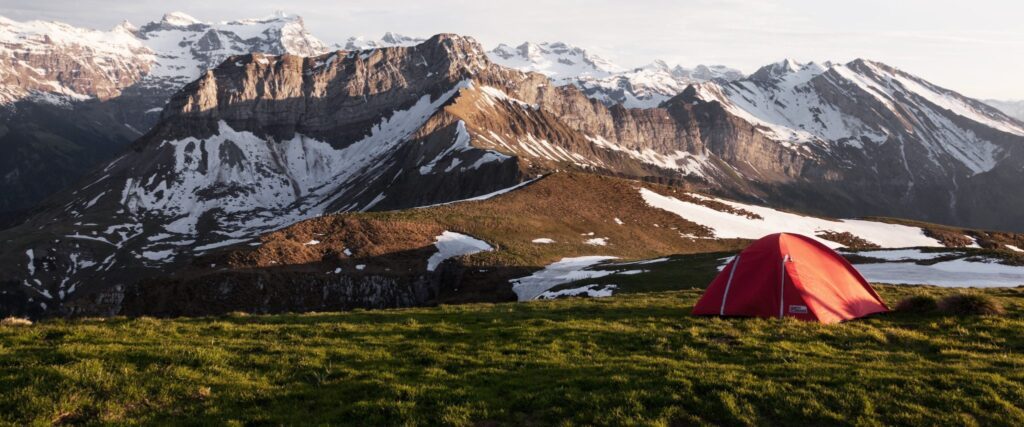Here at OIA, our research team focuses on providing you with insights into the outdoor consumer: what drives their choices, what gear they choose, and what they value about their outdoor experiences. With our new monthly newsletter — Research Roundup — we aim to deliver the best data from our partner, CivicScience, who can reach hundreds of thousands of consumers in real-time to ask questions and gather insights that give you clear insights. You’ll also gain easy access to the full catalog of research reports we offer as well as trends we are tracking.
Happy reading!

Kelly Davis
Director of Research
Outdoor Participants are Worried About Inflation
Overall, outdoor recreation consumers are significantly concerned about inflation, but their concern appears to have reached a plateau. Outdoor participants are less concerned about inflation than the average U.S. consumer.
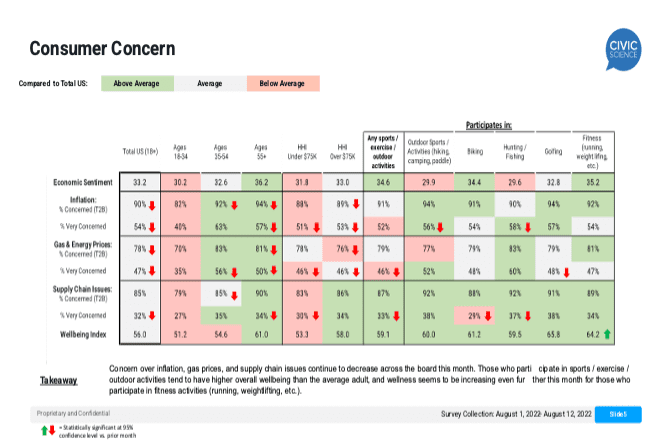
Outdoor recreation consumers say they do not plan to spend more next month on groceries, at bars, or toys and hobbies (including outdoor gear).
Keep in mind, outdoor recreation participants tend to spend more than the average American adult across most categories with the notable exception of groceries. When budgets need to be tightened, outdoor participants literally tighten their belts by cutting spending on groceries.
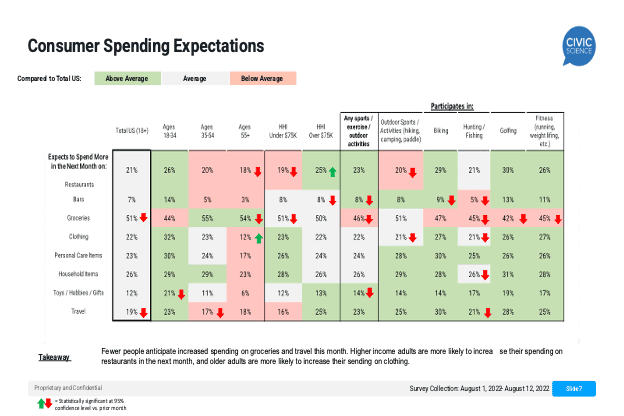
Source: CivicScience. 62.363 responses MoE= +/- 1%
This data indicates that outdoor consumers will continue to spend on outdoor gear, but they do not plan to increase their spending on the category. We should expect flat to slightly declining sales in the outdoor market in August and September.
Who is Willing to Adjust Their Lifestyle to Help the Environment?
I just finished reading “Is Outdoor Recreation Associated with Greater Climate Change Concern in the United States?” by Kyle Knight and Feng Hao. The authors start with the hypothesis that is often repeated in discussions about climate and outdoor that persons who participate in “nature-based leisure activities” have more pro-environmental attitudes than those who don’t. The data and analysis presented in that study is robust and showed a positive significant effect between the frequency of outings and climate change concern. If you have another excellent data source, it never hurts to see if your data jibes with an interesting finding. I decided to take a look at our CivicScience data to see if it told the same story. Spoiler alert, it did.
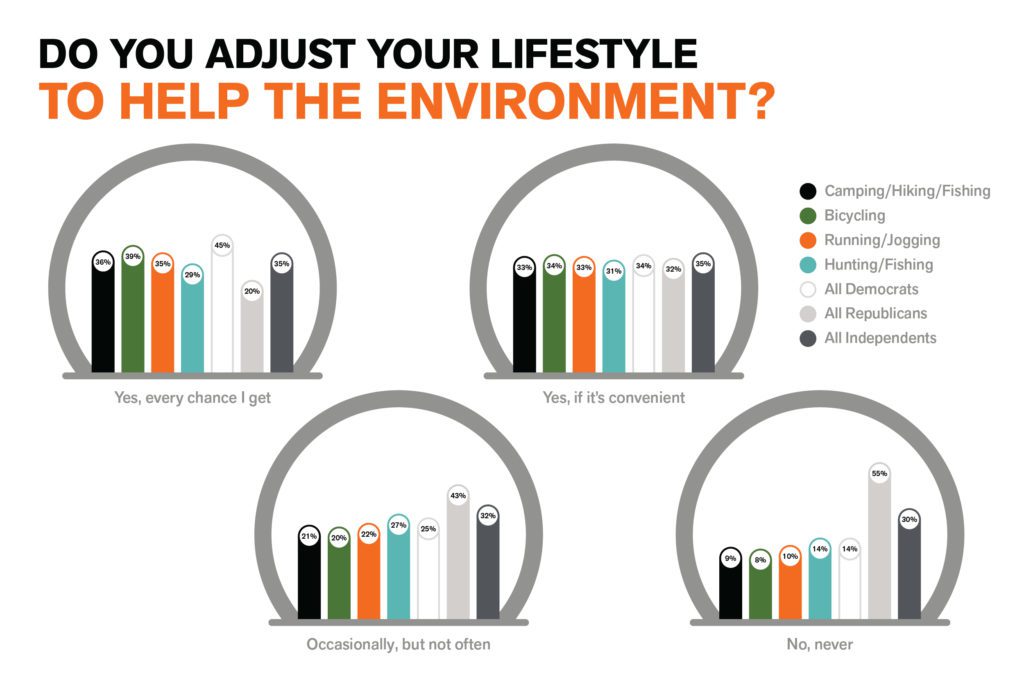
Overall, outdoor recreation participants are more likely to adjust their lifestyle to help the environment. This is particularly remarkable because we found relatively even distributions of political affiliation across major outdoor recreation categories including hiking, bicycling, camping, running, fishing, and hunting. Political affiliation, overall, had the most significant impact on responses to the question “Do you try to adjust your lifestyle to help the environment?” Even while controlling for political affiliation, people that participate in outdoor recreation are more likely than non-participants to adjust their lifestyles at least occasionally to help the environment.
One of the major advantages of CivicScience data is the size of response. In this case, we are looking at more than 200,000 responses and margins or error under +/-1%. This data gives us a more granular look at outdoor activity and attitudes about the environment. In fact, the question “Do you try to adjust your lifestyle to help the environment?” is even more powerful because we can examine it by outdoor category. Additionally, we can compare it to segments of the general population.
Overall, cyclists are most willing to adjust their lifestyles to help the environment. Bicyclists are being chased by the camp/hike/fish category in second place and runners in a close third. Hunters report that they are less likely to make any lifestyle changes to help the environment than other outdoor recreators, but hunters were no more likely than Democrats (generally) to say they would never adjust their lifestyle to help the environment. Additionally, hunters contribute more than $1.6 billion each year for conservation programs through license fees and contributions to conservation groups. Republicans (generally) are least likely to say they would make any adjustments in their lifestyle to help the environment. In fact, in this survey alone, out of 160,662 Republicans surveyed, more than 88,000 indicated they would never adjust their lifestyle to help the environment.
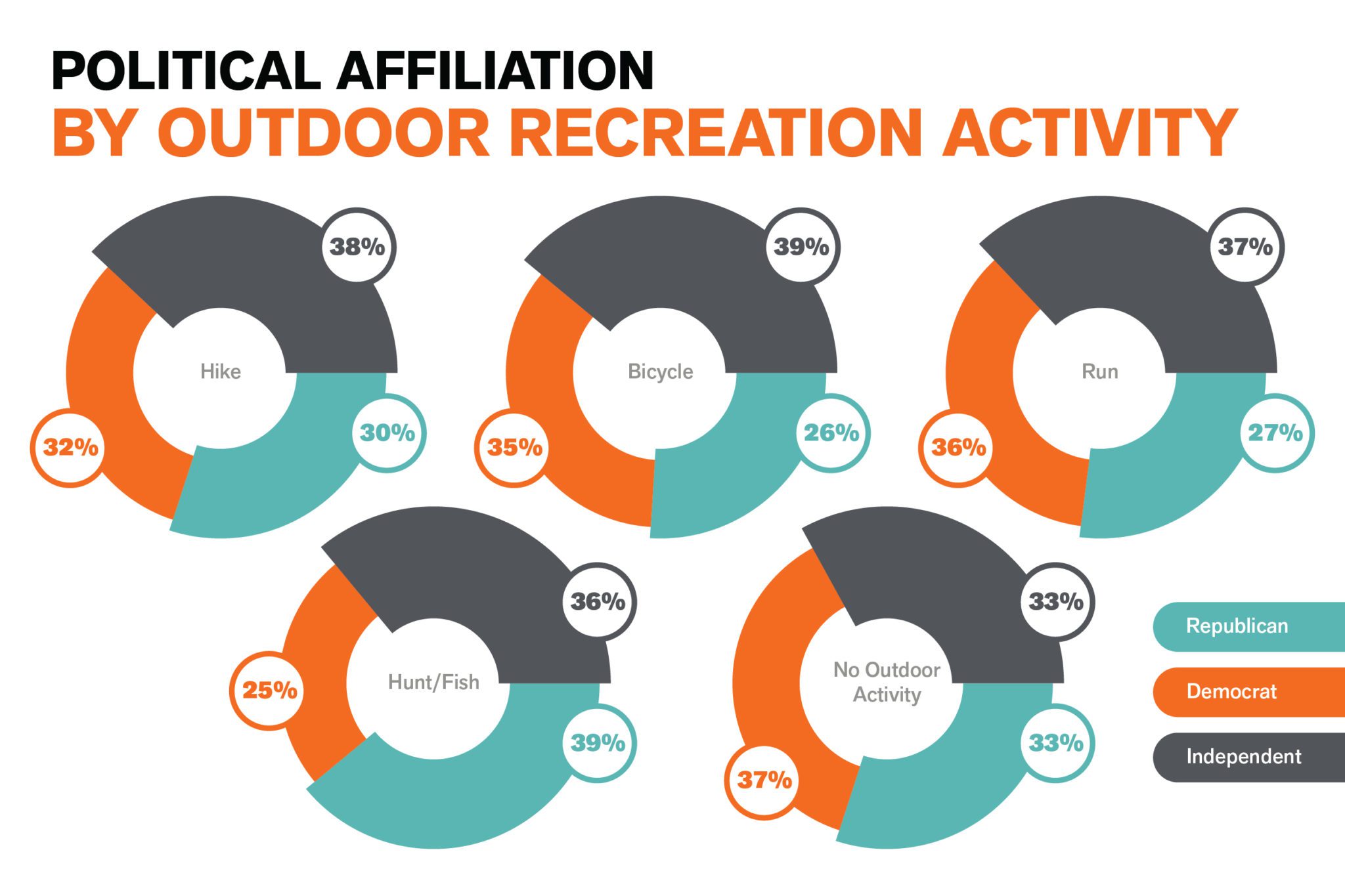
The hypothesis that people who participate in outdoor recreation are more likely to make changes in their lifestyle to help the environment is correct. The data indicate that this holds true across political affiliations. Maybe outdoor recreation offers a platform for civil discourse across political lines about environmental issues that will help us conserve and protect public lands and mitigate impacts of climate change for future generations.
 Trend Spotter: Meet the Upcycler
Trend Spotter: Meet the Upcycler
No, this is not about riding bikes uphill! Upcycled clothing may recall visions of DIY fashion projects gone awry, but today luxe apparel designers are presenting upcycled fashion in their collections. This trend is a nod to sustainable manufacturing and awareness of the environmental impact of apparel manufacturing. Sustainability is key to this trend and consumers of all ages are integrating concerns about the environment into their fashion statements and their decisions about what they will purchase. Read more about outdoor brands with repair, resell & upcycled gear programs.
Research Grab Bag
You can now download the Outdoor Industry Workforce Assessment which looks to identify major trends in workforce hiring and retention, help further educational and up-skilling initiatives, and provide a snapshot of where the industry stands in its efforts to increase diversity, equity, and inclusion. Key findings from the survey include the following:
- New hires: The industry expects to hire for a high volume of entry and skilled professional positions over the next year.
- Work/life balance: Outdoor companies are prioritizing flexible work arrangements and work-life balance as attraction and retention strategies ahead of employee benefits and financial rewards.
- Qualified applicants: 66% of survey respondents report having difficulty finding qualified applicants. The largest barriers to recruiting hard-to-fill jobs are finding qualified applicants, and lack of affordable housing options proximal to the job location.
- Increasing DEI: Companies who have a diversity plan in place are utilizing a wide variety of methods and tactics to achieve their goals. However, companies that do not currently have a diversity plan in place largely do not plan to implement one or do not know where to start.
If you don’t want to read about it, you can watch our panel discussion about it here.
You can also download the new State of the Outdoor Market report, which shares exclusive insights on participation, consumer trends, and economic and social forces impacting our industry. Key findings from the report include:
- Outdoor economy: Outdoor recreation accounted for 1.8% of the U.S. GDP in 2021 with $689B in gross output and 4.3M jobs.
- Increasing diversity: Diversity in age and ethnicity is accelerating in the U.S., but the outdoor participant base is less diverse than the population.
- Outdoor growth: New participant entries into outdoor recreation are 26% since January 2020. Skateboarding, hiking, kayaking, and surfing had the highest growth rates across outdoor categories.
- Post-COVID effects: Patterns in how we return to work will affect outdoor participation. Remote work allows many to participate outdoors for the first time, during hours when they would have been in an office or commuting, and across more outdoor activities.
- Rising inflation: High inflation, 9.1% in June and 8.5% in July, is likely to reduce spending in the outdoor market.
- Fashion trends: Several fashion trends are currently red hot including “Cottage Core” and “Coastal Grandmother.” Read about and see images related to these and more hot trends that are likely to impact outdoor apparel.




